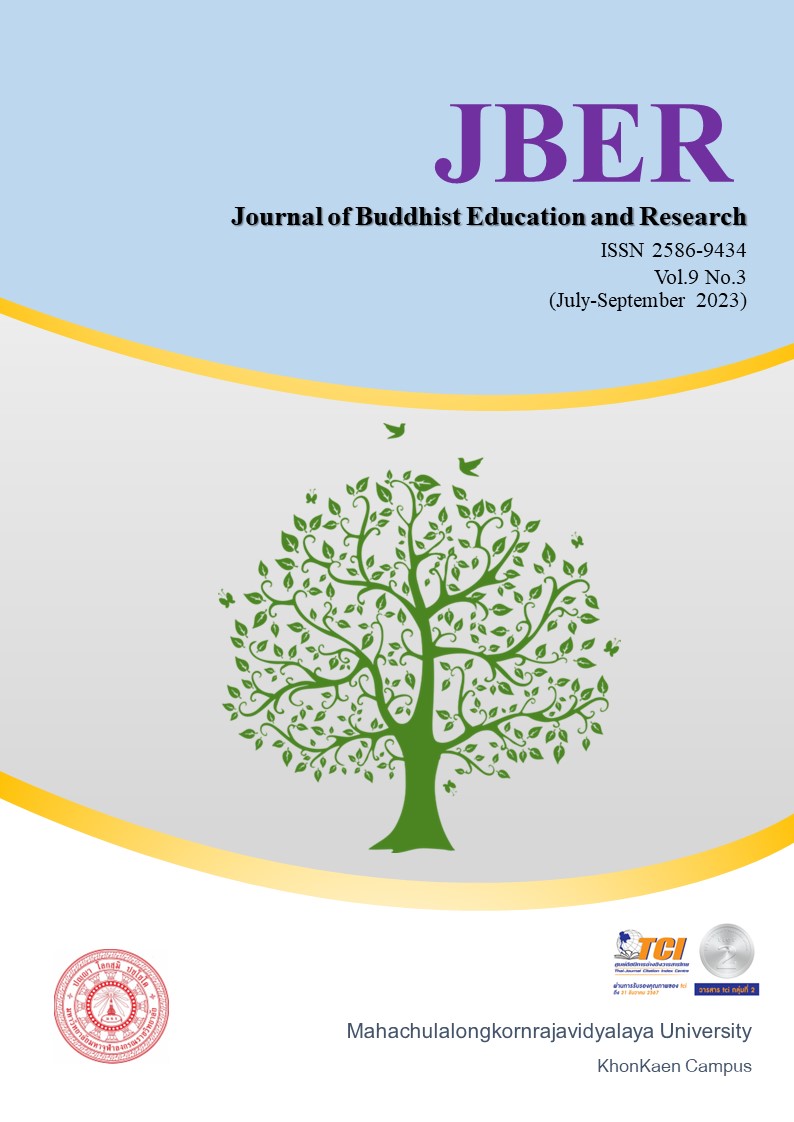THE COMPARISON OF EFFICIENCY OF THE CAPITAL ASSET PRICING MODEL, THE FAMA-FRENCH THREE-FACTOR MODEL AND THE FAMA-FRENCH FIVE-FACTOR MODEL FOR ENERGY AND UTILITIES IN THE STOCK EXCHANGE OF THAILAND
Keywords:
Excess return, Capital Asset Pricing Model, Fama-French Three-Factor Model, Fama-French Five-Factor Model, Energy and Utilities in The Stock Exchange of ThailandAbstract
The objective of this study was to compare the performance of the Capital Asset Pricing Model (CAPM), the Fama-French Three-Factor Model and the Fama-French Five-Factor Model in explaining excess rate of returns for Energy and Utilities in the Stock Exchange of Thailand. A group of 17 stocks from the Energy and Utilities that are registered in the Stock Exchange of Thailand during the period from 2012 to 2021 was chosen as a sample for this study. The result shows that the Fama-French Five-Factor Model is the best model in explaining the variation of excess returns with the average Adjusted R2 equals to 73.45%. The second model is the Fama-French Three-Factor Model which can explain the variation of excess returns with the average Adjusted R2 equals to 30.85%. The third model is the Capital Asset Pricing Model (CAPM) which can explain the variation of excess returns with the average Adjusted R2 equals to 20.30%.
The intercept-test result also shows that the independent variables of the Fama- French Five-Factor Model are able to capture the variation of excess rate of return in 14 out of 15 portfolios, while the Fama-French Three-Factor Model can capture the variation of excess rate of return in 13 out of 15 portfolios and the Capital Asset Pricing Model (CAPM) can only capture the variation of excess rate of return in 12 out of 15 portfolios. These results agree with the intercept of GRS Test that the CAPM, Three-Factor and Five-Factor of Fama- French cannot explain the variation of excess rate of return in all portfolios.
References
ธนาคารกรุงศรีอยุธยา จํากัด (มหาชน). (2564). แนวโน้มธุรกิจและอุตสาหกรรมไทย ปี 2564-2566. สืบค้น เมื่อ 9 ตุลาคม 2564. จาก https://www.krungsri.com/th/research/industry/summary- outlook/industry-summary-outlook-2021-2023.
ธนาคารไทยพาณิชย์ จํากัด (มหาชน). (2565). เรารู้จักความเสี่ยงในการลงทุนแค่ไหน?. สืบค้นเมื่อ 4 พ ฤ ษ ภ า ค ม 2565. จ า ก https://www.scb.co.th/th/personal-banking/stories/risk- investment.html.
นัชชา ตั้งวิชิตฤกษ์. (2560). การเปรียบเทียบความสามารถของแบบจําลอง CAPM APT และ FAMA-FRENCH ในการทํานายอัตราผลตอบแทนหลักทรัพย์หมวดธุรกิจการเงิน. การค้นคว้าอิสระปริญญาวิทยาศาสตร์ มหาบัณฑิต. มหาวิทยาลัยธรรมศาสตร์.
ประภาส ตันพิบูลย์ศักดิ์. (2565). แนวโน้มของเศรษฐกิจไทยและผลกระทบต่อตลาดหุ้นในปี 2565. สืบค้นเมื่อ 4 พฤษภาคม 2565. จาก https://www.bangkokbiznews.com/blogs/columnist/990055.
พิชญะ นิ่มเจริญ. (2563). การเปรียบเทียบประสิทธิภาพของแบบจําลองกําหนดราคาหลักทรัพย์ (CAPM) กับ แบบจําลอง 3 ปัจจัยของ Fama-French กรณีศึกษา : ตลาดหลักทรัพย์ เอ็ม เอ ไอ. การค้นคว้าอิสระ ปริญญาบริหารธุรกิจมหาบัณฑิต. มหาวิทยาลัยธรรมศาสตร์.
รัชพล เกื้ออนุกูลกิจ. (2563). การทดสอบแบบจําลองกําหนดราคาหลักทรัพย์ 5 ปัจจัย ในการวิเคราะห์อัตรา ผลตอบแทนส่วนเกินของหลักทรัพย์หมวดกลุ่มธุรกิจการเงิน. การค้นคว้าอิสระ ปริญญาวิทยาศาสตร์ มหาบัณฑิต. มหาวิทยาลัยธรรมศาสตร์.
วรรณรพี บานชื่นวิจิตร. (2559). การศึกษาเปรียบเทียบความสามารถของแบบจําลอง CAPM และ Fama- French ในการประมาณการอัตราผลตอบแทนของหลักทรัพย์หมวดพลังงานและสาธารณูปโภคใน ตลาดหลักทรัพย์แห่งประเทศไทย. การค้นคว้าอิสระ ปริญญาบริหารธุรกิจมหาบัณฑิต. มหาวิทยาลัย หอการค้าไทย.
เมษิณี เครือเหลา. (2560). เปรียบเทียบประสิทธิภาพของ แบบจําลองกําหนดราคาหลักทรัพย์ของ CAPM แบบจําลองกําหนดราคาหลักทรัพย์ 3 ปัจจัย และ 5 ปัจจัย กรณีศึกษา : ประเทศไทย. การค้นคว้า อิสระปริญญาเศรษฐศาสตรมหาบัณฑิต สาขาเศรษฐศาสตร์ธุรกิจ. มหาวิทยาลัยธรรมศาสตร์.
Belen Blanco. (2012). The use of CAPM and Fama and French Three Model: portfolios selection. Public and Municipal Finance, 1(2): 61-70.
Eugene F. Fama and Kenneth R. French. ( 1993) . Common risk factors in the returns on stocks and bonds. Journal of Financial Economics, 33: 3-56.
(2015). A five-factor asset pricing model. Journal of Financial Economics, 116: 1-22. Mahnoor Sattar. ( 2017) . CAPM Vs Fama-French Three-Factor Model: An Evaluation of Effectiveness in Explaining Excess Return in Dhaka Stock Exchange. International Journal
of Business and Management, 12(5) : 119-129.
Sebastian Nilsson and Felix Ljungstrom. (2019). Ank Empirical Study of CAPM, the Fama-French
three-factor and the Fama-French five-factor Model. Sweden: Centre for Finance.
Journal of Buddhist Education and Research : JBER
ปีที่ 9 ฉบับที่ 3 กรกฎาคม-กันยายน 2566 [74] Vol.9 No.3 July-September 2023
Tzu-Lun Huang. (2019). Is the Fama and French five-factor model robust in the Chinese stock market?. Asia Pacific Management Review, 24: 278-289.
William F. Sharpe. (1964). Capital Asset Prices: A Theory of Market Equilibrium under Conditions of Risk. The Journal of Finance, 3: 425-442.
Yasar Erdinc. 2018. Comparison of CAPM, Three-Factor Fama-French Model and Five-Factor Fama-French Model for the Turkish Stock Market. Financial Management from an Emerging Market Perspective, 4: 69-92.





